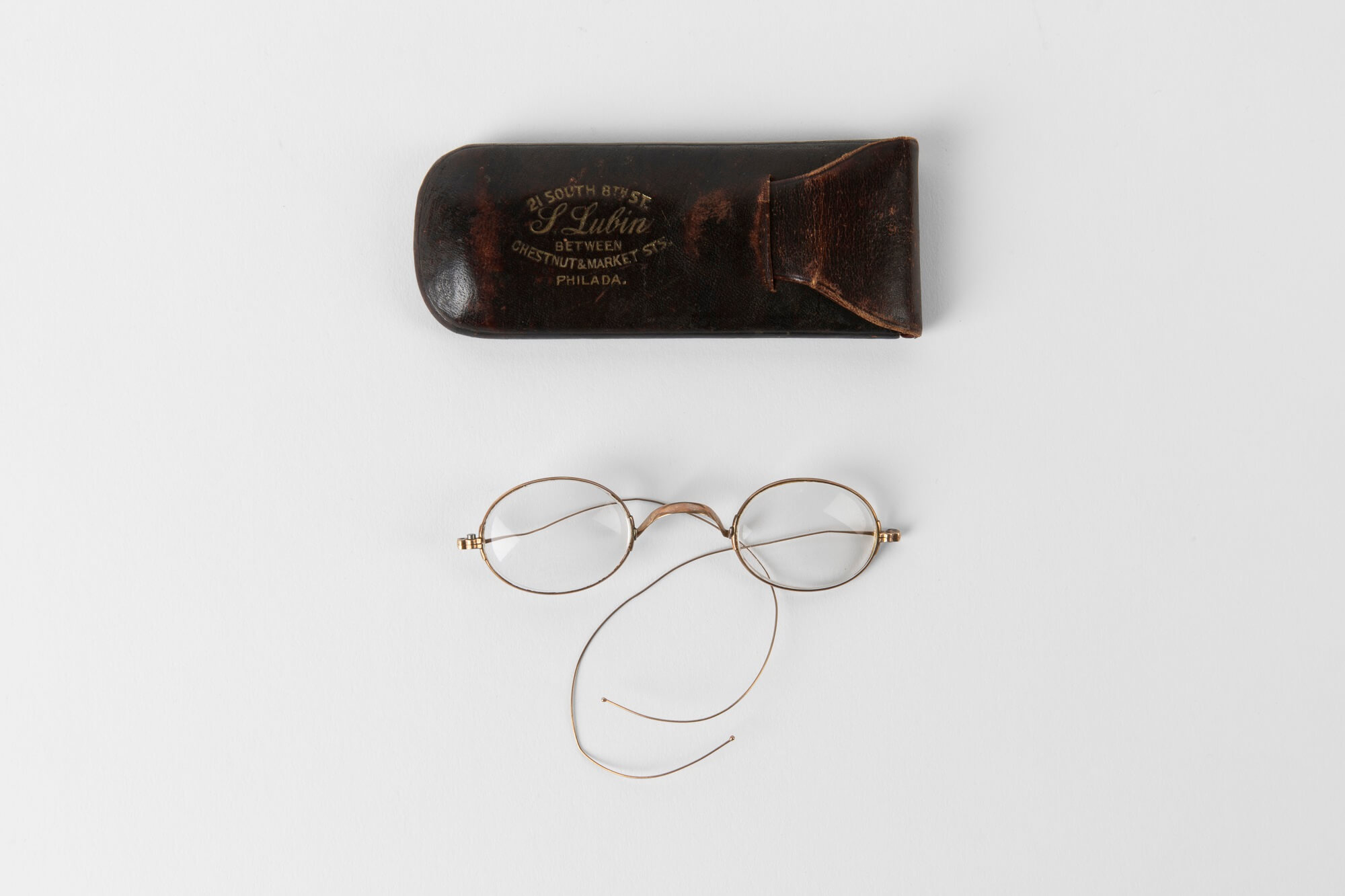Arriving in the United States during its centennial year, Siegmund Lubin (ca. 1851-1923) peddled eyeglasses before settling in Philadelphia in 1885. He began making magic lantern slides as a side venture in his optical shop. After viewing early motion picture demonstrations, he was hooked on the new medium. Soon Lubin was marketing his own camera equipment, opening theaters, and distributing 3,000 films produced at locations across the country.
Lubin believed film would transform human experience and, decades before television, predicted that the day’s news would be delivered to homes each evening on a film reel. He dreamed of adding sound to motion pictures, and produced recorded audio tracks for his films long before “talkies.” Lubin introduced film into scientific education, providing doctors free access to his studios for creating experimental and training films. He employed hundreds of people in a creative, fun atmosphere and together they helped shape the motion picture industry.
Eyeglasses made by Siegmund Lubin, Philadelphia, Pennsylvania, ca. 1890
National Museum of American Jewish History, 2017.10.1
Gift of Wilma Forman in memory of Joseph Gartenberg

From 1896 and his first backyard short Horse Eating Hay to his final feature, 1916’s The Light at Dusk, Lubin’s repertoire ranged from educational films, historical dramas, and disaster movies to mysteries, comedies, and epic war films. Explore this story in 21 artifacts. Scroll to the right and click on each image to learn more. Unless otherwise indicated, all images are from the collection of the Weitzman National Museum of American Jewish History.
Lubin’s steadfast generosity, ongoing legal trouble related to the Motion Picture Patents Company, the loss of European markets during World War I, and a disastrous fire at Lubinville all conspired against him. Bankrupt at 75, Lubin returned to his optical shop, but he remained a hero to the generation that built Hollywood in the 1920s. When former associates ― luminaries such as Charlie Chaplin, Douglas Fairbanks, Louis B. Mayer, Samuel Goldwyn, and many others ― later learned that his widow was in declining health and financial straits, they honored Lubin’s memory by raising funds to assist her.
From the medium’s earliest days, Lubin worked tirelessly to see it reach its potential. At the same time, he created an environment in which his workers could reach their potential, too. Lubin’s 20-year film career must have exceeded any expectation the ophthalmologist had when he first experimented with motion pictures in the 1890s.
Want to learn more? Here are just a few suggestions for books and online exploration to take a deeper dive.